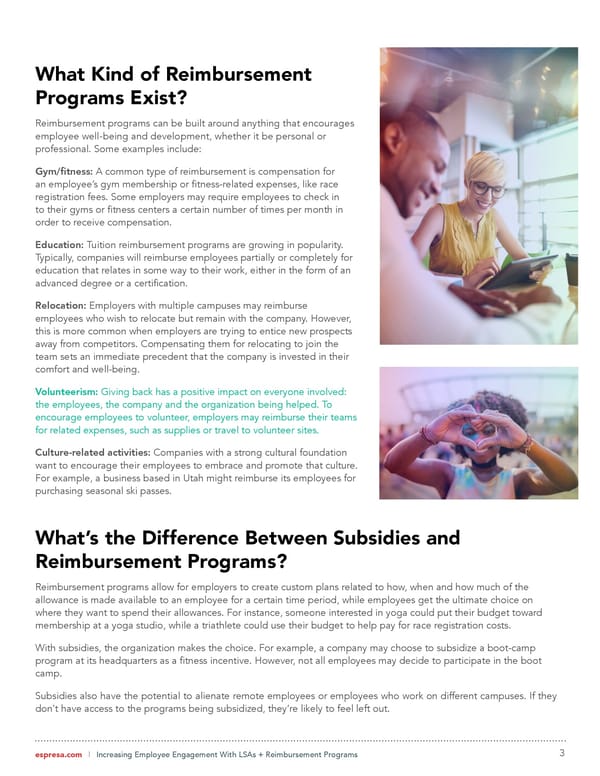What Kind of Reimbursement Programs Exist? Reimbursement programs can be built around anything that encourages employee well-being and development, whether it be personal or professional. Some examples include: Gym/fitness: A common type of reimbursement is compensation for an employee’s gym membership or fitness-related expenses, like race registration fees. Some employers may require employees to check in to their gyms or fitness centers a certain number of times per month in order to receive compensation. Education: Tuition reimbursement programs are growing in popularity. Typically, companies will reimburse employees partially or completely for education that relates in some way to their work, either in the form of an advanced degree or a certification. Relocation: Employers with multiple campuses may reimburse employees who wish to relocate but remain with the company. However, this is more common when employers are trying to entice new prospects away from competitors. Compensating them for relocating to join the team sets an immediate precedent that the company is invested in their comfort and well-being. Volunteerism: Giving back has a positive impact on everyone involved: the employees, the company and the organization being helped. To encourage employees to volunteer, employers may reimburse their teams for related expenses, such as supplies or travel to volunteer sites. Culture-related activities: Companies with a strong cultural foundation want to encourage their employees to embrace and promote that culture. For example, a business based in Utah might reimburse its employees for purchasing seasonal ski passes. What’s the Difference Between Subsidies and Reimbursement Programs? Reimbursement programs allow for employers to create custom plans related to how, when and how much of the allowance is made available to an employee for a certain time period, while employees get the ultimate choice on where they want to spend their allowances. For instance, someone interested in yoga could put their budget toward membership at a yoga studio, while a triathlete could use their budget to help pay for race registration costs. With subsidies, the organization makes the choice. For example, a company may choose to subsidize a boot-camp program at its headquarters as a fitness incentive. However, not all employees may decide to participate in the boot camp. Subsidies also have the potential to alienate remote employees or employees who work on different campuses. If they don’t have access to the programs being subsidized, they’re likely to feel left out. espresa.com | Increasing Employee Engagement With LSAs + Reimbursement Programs 3
 Espresa Increasing Engagement With Reimbursements Page 2 Page 4
Espresa Increasing Engagement With Reimbursements Page 2 Page 4